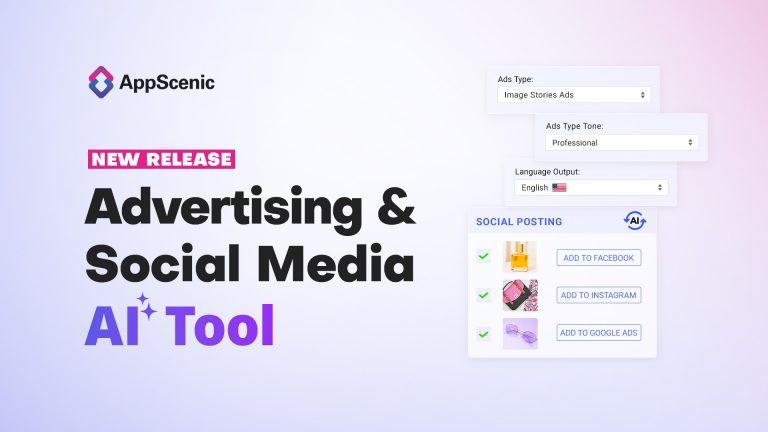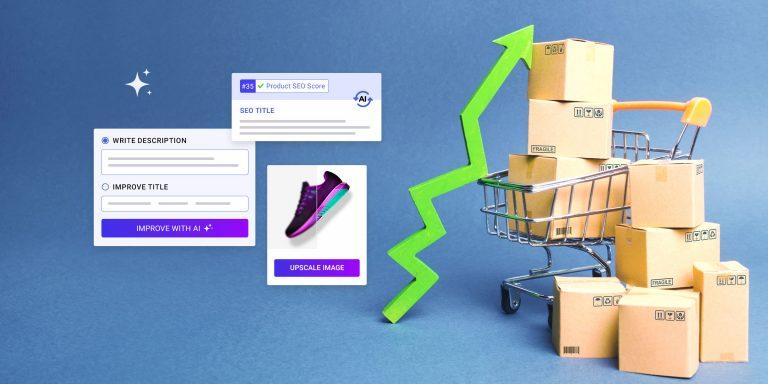Dropshipping has long been a favorite business model for people seeking to start an ecommerce venture with minimal upfront investment. But as with any industry, innovation is key to staying ahead. Now we know this is not the first time we’ve been talking (or writing in this case) about how new technologies, like this article on automation, are revolutionizing the dropshipping landscape, making it more efficient, scalable, and customer-friendly than ever before.
So, today, we’ll be exploring how these awesome advancements are changing the game and what this means for the future of dropshipping.
Table of Contents
The evolution of dropshipping technology
Early days: Manual processes and limited tools
In the early days of dropshipping, many tasks were manual and time-consuming. Entrepreneurs had to source products, manage orders, and handle customer service with limited tools. The process was tiresome, and scalability was a significant challenge. However, the potential for high profits and low risk kept many entrepreneurs invested in the model.
Enter automation
The introduction of automation tools marked a turning point. Platforms like AppScenic made it easier to import products, manage orders, and sync inventory with suppliers. Automation streamlined many processes, reducing the time and effort required to run a dropshipping business.
Read more: The Future of Dropshipping Automation: What’s Next?
AI and machine learning
The latest wave of technological advancements involves artificial intelligence (AI) and machine learning. These technologies are transforming how dropshipping businesses operate, offering enhanced efficiency, personalization, and insights.
Game-changing technologies in dropshipping
AI-powered product sourcing
Finding the right products to sell is one of the most critical aspects of dropshipping. AI-powered tools can analyze market trends, customer preferences, and competitive data to recommend high-demand products. This data-driven approach eliminates much of the guesswork, allowing entrepreneurs to make informed decisions quickly.
Example: Product recommendations
Imagine an AI tool that scans thousands of products across multiple suppliers and identifies trending items based on real-time data. It’s like having a personal shopping assistant who knows exactly what’s hot in the market.
Chatbots and virtual assistants
Customer service is another area where AI is making a significant impact. Advanced chatbots and virtual assistants can handle a wide range of customer inquiries, from tracking orders to answering product questions. These AI-powered tools are available 24/7, providing instant support and improving customer satisfaction.
Example: AI-driven customer support
Picture a customer visiting your online store at midnight with a question about a product. Instead of waiting until the next business day for a response, an AI chatbot provides immediate assistance, guiding the customer through their query and even suggesting related products.
Predictive analytics
Predictive analytics uses machine learning algorithms to analyze historical data and predict future trends. For dropshipping businesses, this means better inventory management, optimized pricing strategies, and targeted marketing campaigns.
Example: Inventory management
Predictive analytics can forecast which products will be in high demand during specific seasons, helping dropshippers stock up accordingly. It’s like having a crystal ball that tells you what your customers will want next.
Blockchain technology
Blockchain technology is known for its role in cryptocurrencies, but it also has significant implications for dropshipping. Blockchain can enhance transparency and security in supply chains, providing an immutable record of a product’s journey from manufacturer to customer.
Example: Supply chain transparency
Imagine being able to provide your customers with detailed information about the origin and journey of their purchased products. Blockchain technology ensures that this data is accurate and tamper-proof, building trust and credibility with your customers.
Internet of Things (IoT)
The Internet of Things (IoT) connects everyday devices to the internet, enabling real-time data sharing and enhanced automation. In dropshipping, IoT can improve logistics and inventory management.
Example: Smart warehouses
IoT-enabled warehouses use sensors to monitor inventory levels, track shipments, and manage storage conditions. This real-time data ensures that products are always available and delivered on time, reducing delays and improving customer satisfaction.

The benefits of embracing new technology in dropshipping
Enhanced efficiency
New technologies automate repetitive tasks, allowing entrepreneurs to focus on strategic aspects of their business. This increased efficiency leads to faster order processing, reduced errors, and a more streamlined operation.
Improved customer experience
AI-powered tools and IoT devices enhance the customer experience by providing instant support, accurate product information, and timely deliveries. Satisfied customers are more likely to return and recommend your store to others.
Data-driven decision making
AI and predictive analytics provide valuable insights into market trends, customer behavior, and operational efficiency. This data-driven approach enables entrepreneurs to make informed decisions that drive growth and profitability.
Scalability
With automation and AI, dropshipping businesses can scale more easily. Managing a large volume of products and orders becomes feasible, allowing businesses to expand their offerings and reach new markets.
Challenges and considerations
Integration complexity
Integrating new technologies with existing systems can be complex and time-consuming. So, you would need to ensure that your tech stack is compatible and that all tools work seamlessly together.
One way to do this is to choose a dropshipping platform like AppScenic that does all this for you, including having AI tools optimizing your online store.
Read more: How AI-Powered Tools Can Streamline Your Business
Data privacy
With increased data collection comes the responsibility of protecting customer information. Dropshipping businesses must adhere to data privacy regulations and implement robust security measures to safeguard sensitive data.
Cost
While many of these technologies offer significant benefits, they can also be expensive to implement. Entrepreneurs need to weigh the costs against the potential return on investment and prioritize their tech investments accordingly.
The future of dropshipping
As technology continues to evolve, the dropshipping landscape will keep transforming. Future advancements may include more sophisticated AI tools, enhanced IoT capabilities, and further integration of blockchain technology. These innovations will continue to streamline operations, improve customer experiences, and drive growth.
Advanced personalization
AI will become even more adept at personalizing the shopping experience, tailoring product recommendations and marketing messages to individual customers in real time. This level of personalization will drive higher engagement and conversion rates.
Autonomous delivery
The rise of autonomous delivery vehicles and drones could revolutionize the logistics of dropshipping. Faster and more efficient deliveries will enhance customer satisfaction and reduce shipping costs.
Augmented Reality (AR) and Virtual Reality (VR)
AR and VR technologies will provide immersive shopping experiences, allowing customers to virtually try on products or explore virtual showrooms. This innovation will make online shopping more interactive and engaging.
Conclusion
The dropshipping industry is undergoing a significant transformation, driven by new technologies that enhance efficiency, scalability, and customer satisfaction. From AI-powered product sourcing and chatbots to predictive analytics and blockchain, these innovations are revolutionizing how dropshipping businesses operate.
Embracing these technologies is not just about staying competitive; it’s about positioning your business for future growth. By leveraging the latest advancements, dropshipping entrepreneurs can streamline their operations, make data-driven decisions, and provide exceptional customer experiences.
Read next: Streamline Your Marketing: New AI Tool for Google, Facebook, and Instagram Ads











